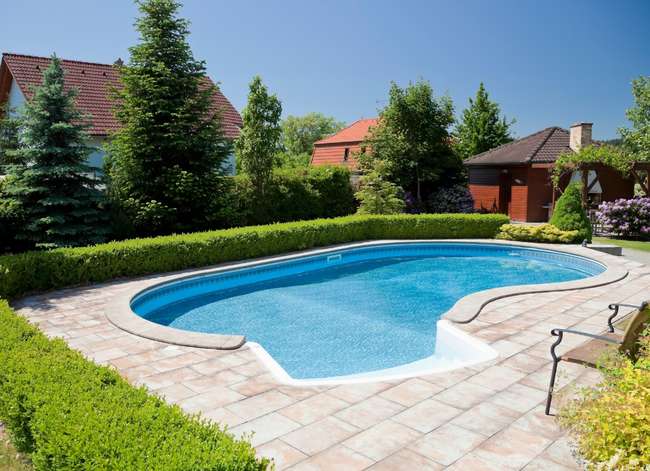

We may earn revenue from the products available on this page and participate in affiliate programs. Learn More ›
Home Advice You Can Trust
Tips, tricks & ideas for a better home and yard, delivered to your inbox daily.
Don’t Settle for an Ice-Cold Pool
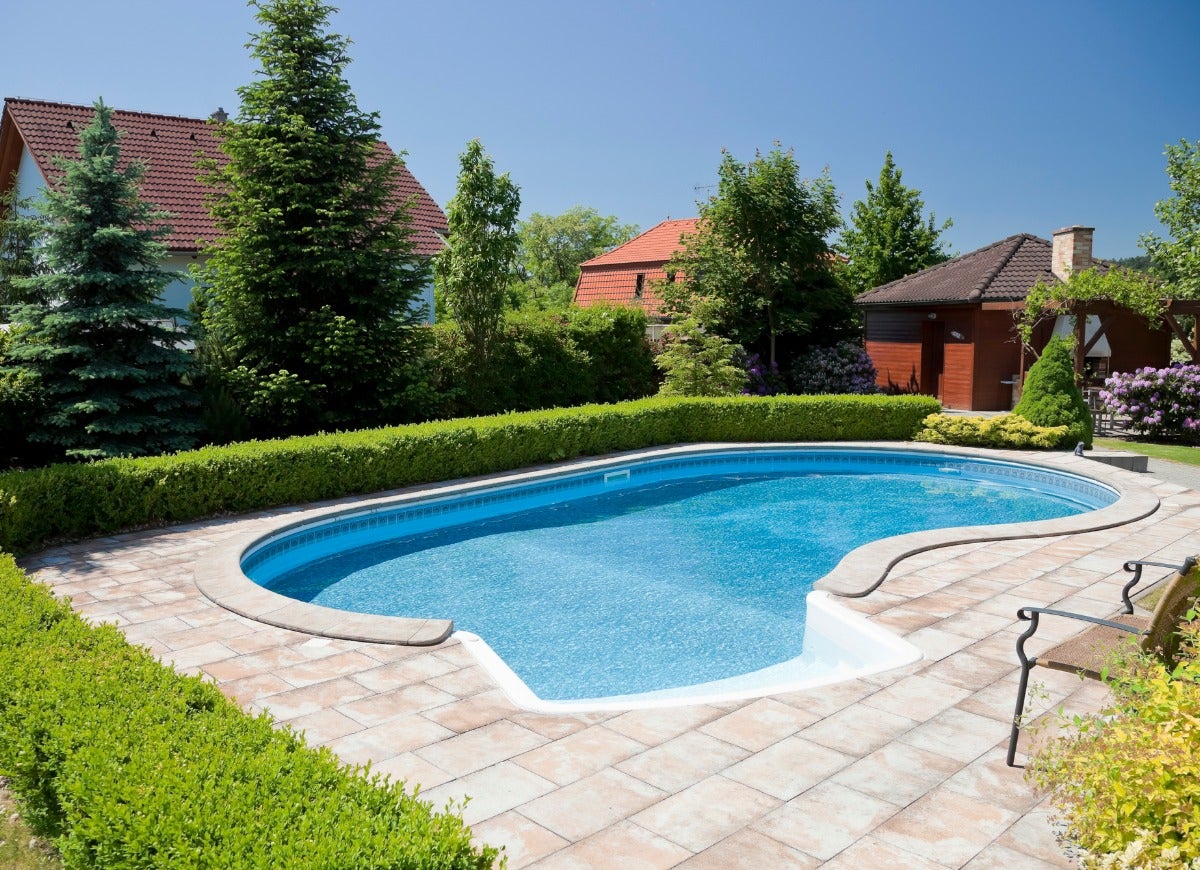
While a dip in the pool can be a refreshing way to cool off on a hot summer day, water temperatures in the 70s can leave you shivering and searching for the warmth of a towel. Although preferences vary from person to person, pool temperatures in the 80s strike a happy medium: warm enough to be enjoyable for most children and adults, yet not quite warm enough to promote the growth of algae and bacteria.
But getting pool water to 80 degrees Fahrenheit can be a difficult task, especially for those who live in northern climates. Electric or gas pool heaters are one common way of warming up the water in a pool, but they have high price tags and are expensive to operate. If you’re willing to get a little creative, there are plenty of more affordable ways to bring that icy pool water to a comfortable temp.
Spread a Solar Cover
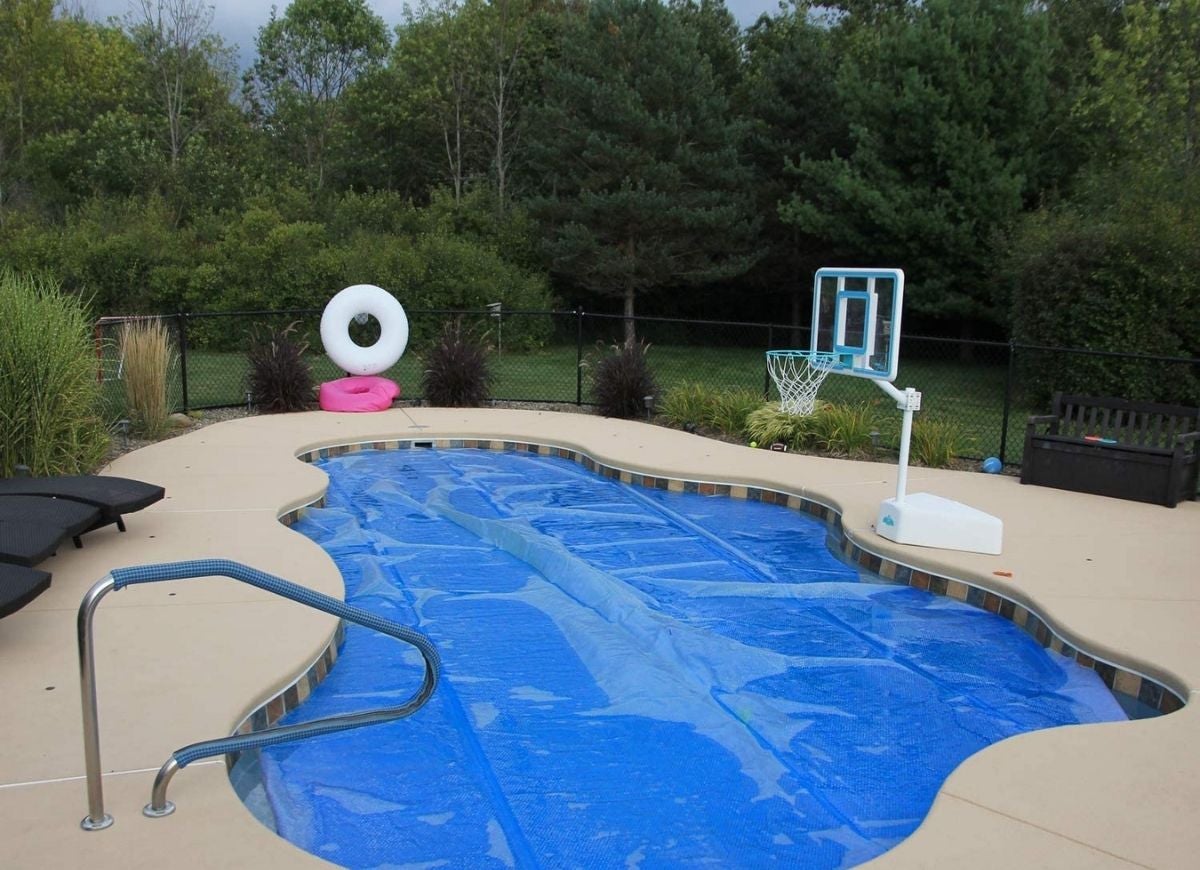
Pool water loses heat through evaporation. As the sun heats the pool water, that warm water rises to the top, where it evaporates. A solar cover, such as this one from Sun2Solar (available on Amazon), creates a barrier that prevents heated water from escaping the pool. Solar covers also have small air pockets, similar in look and feel to bubble wrap, that capture heat from the sun and transfer it to the water. By blocking evaporation and transferring heat, a solar cover can raise a pool’s water temperature by as much as 12 degrees.
Coil a Black Garden Hose
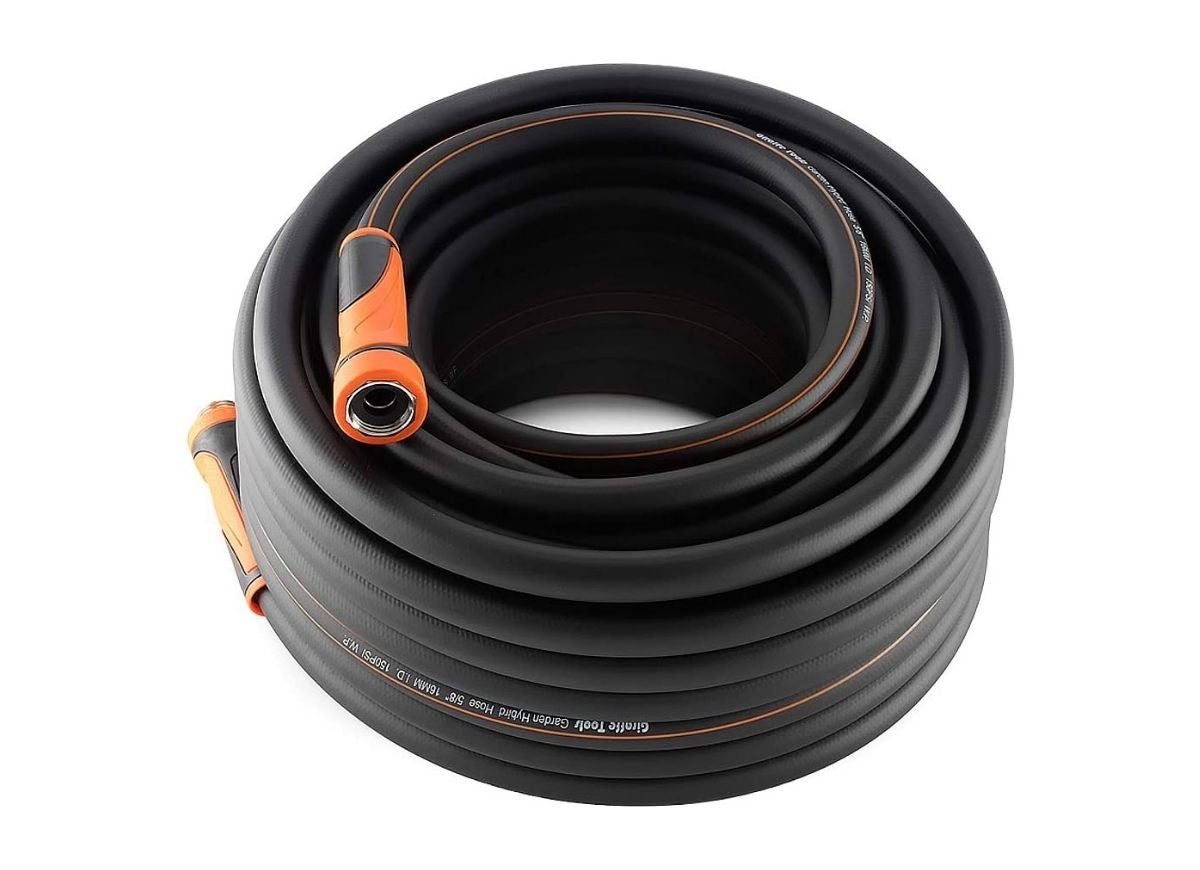
Coil a 100- to 150-foot black garden hose like this one from Giraffe (available on Amazon), near the pool so that it receives lots of direct sunlight. It will then absorb the sun’s heat. Connect one end of the hose to a pump set up to pull water from the pool (you can even use the pool’s pump), and place the other end in the pool. As the pump pulls water out of the pool and pushes it through the hose, the hot hose heats the water before recirculating it back into the pool.
Float Solar Rings
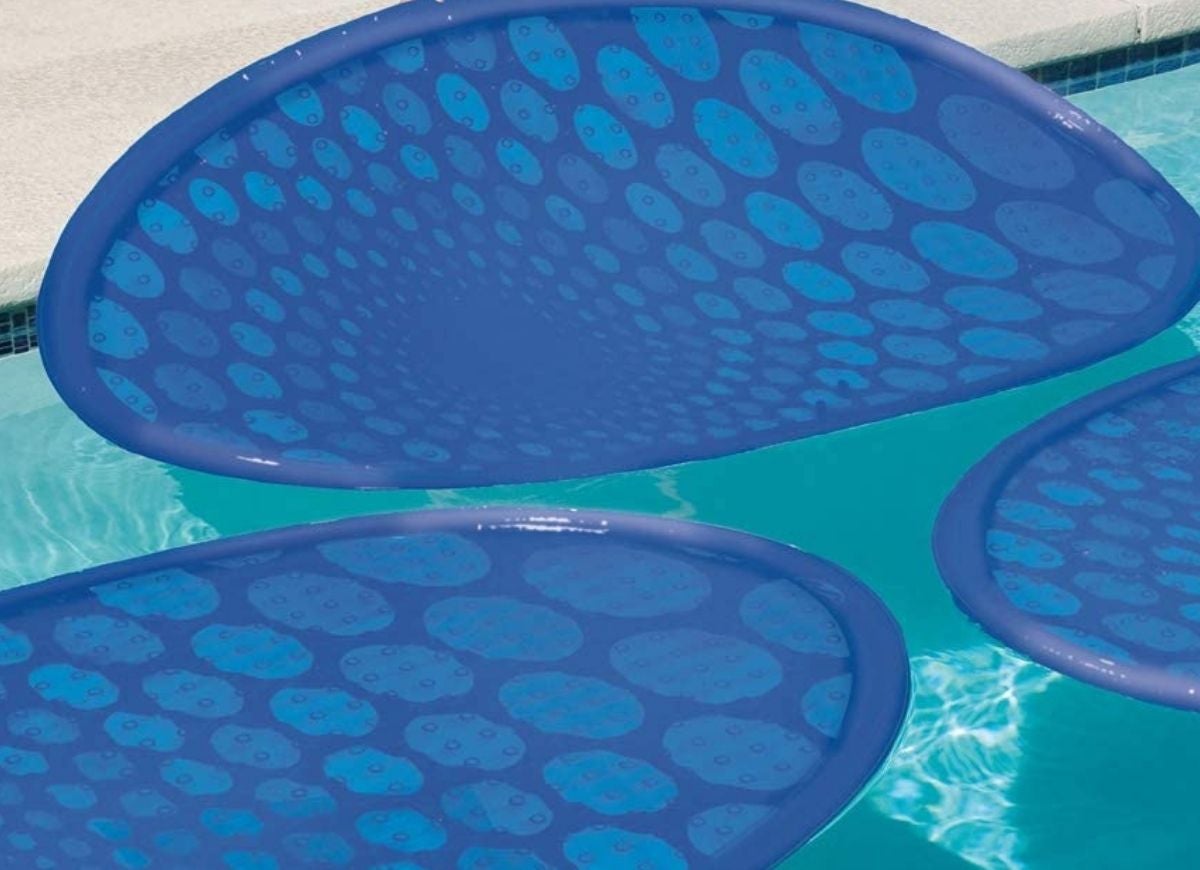
Solar rings function similarly to a solar cover but are easier to use. Each ring is typically 5 feet in diameter. When several are grouped together in the pool, they act like a solar cover, preventing heated water from leaving the pool while absorbing heat from the sun and transferring it to the water. Solar rings are easier to place and remove than a full-size cover, but they aren’t as efficient at heating the water.
Lay Solar Mats
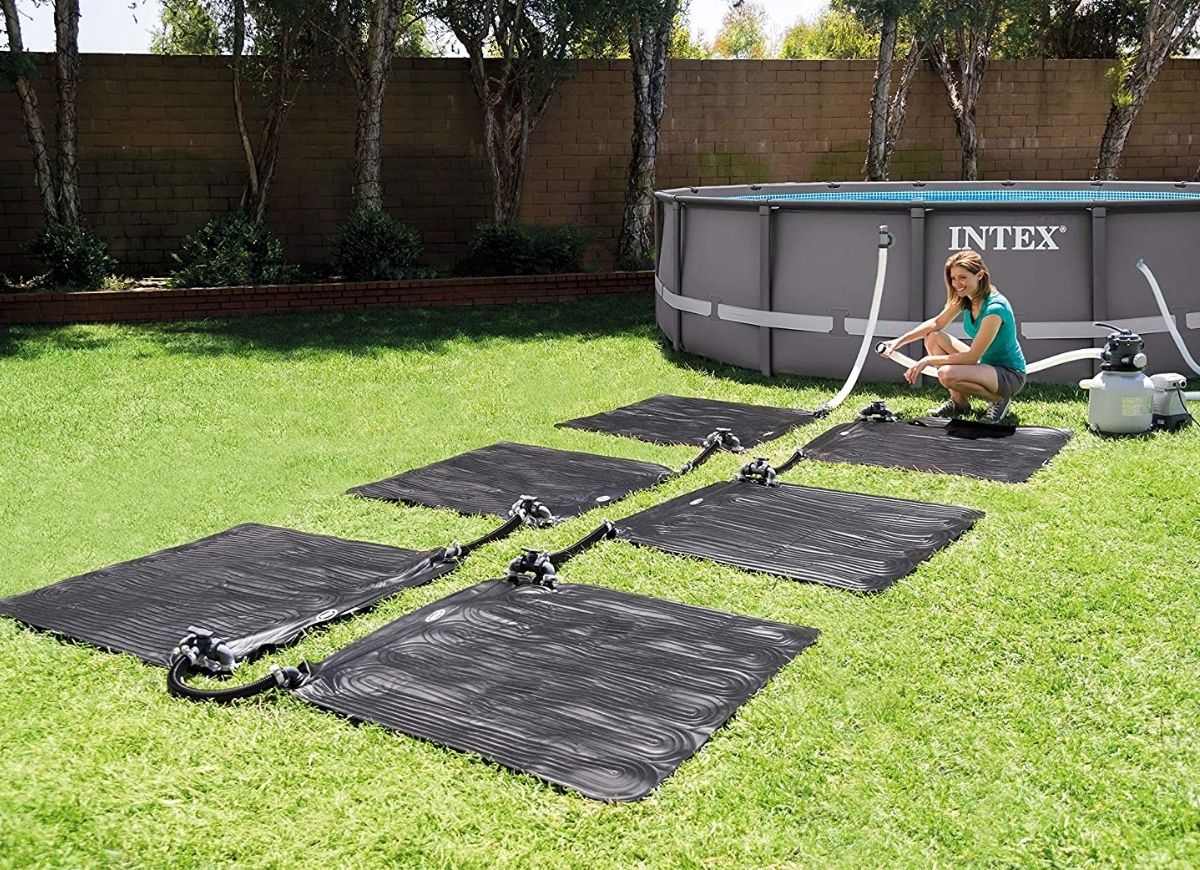
Using solar mats to heat the pool is similar to using the black hose heater, but relies on a mat instead of a hose. A solar mat consists of a flat black vinyl mat with a series of tubes inside of it that hold water. The mat lies flat on a roof or other surface, where it can absorb heat from the sun. A pump pulls water from the pool and pushes it through the tubes inside the mat, warming the water before recirculating it back into the pool.
Float Some Black Trash Bags
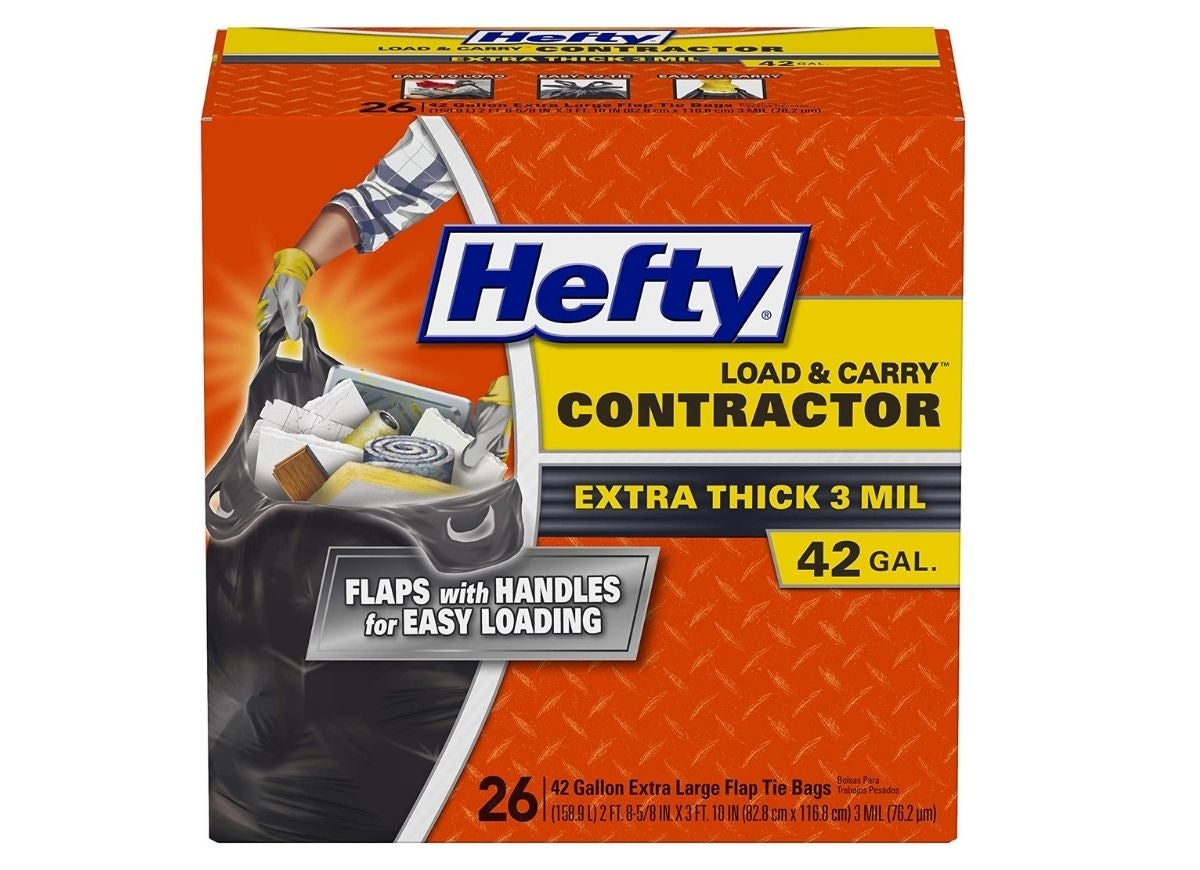
Because dark-colored objects absorb heat from the sun, placing black material with a lot of surface area on your pool will help heat the water. One way of putting this concept into practice is to float large black trash bags (yes, trash bags) in your pool. The bags will absorb heat and transfer it to the pool water, warming it up, while also serving as a barrier that prevents warm water at the surface of the pool from evaporating. You can either float the bags themselves or drape them over pool noodles to add buoyancy. For best results, use thick (3 mil) contractor-grade bags, like these bags from Hefty (available on Amazon).
Create a Wood-Fired Pool Heater
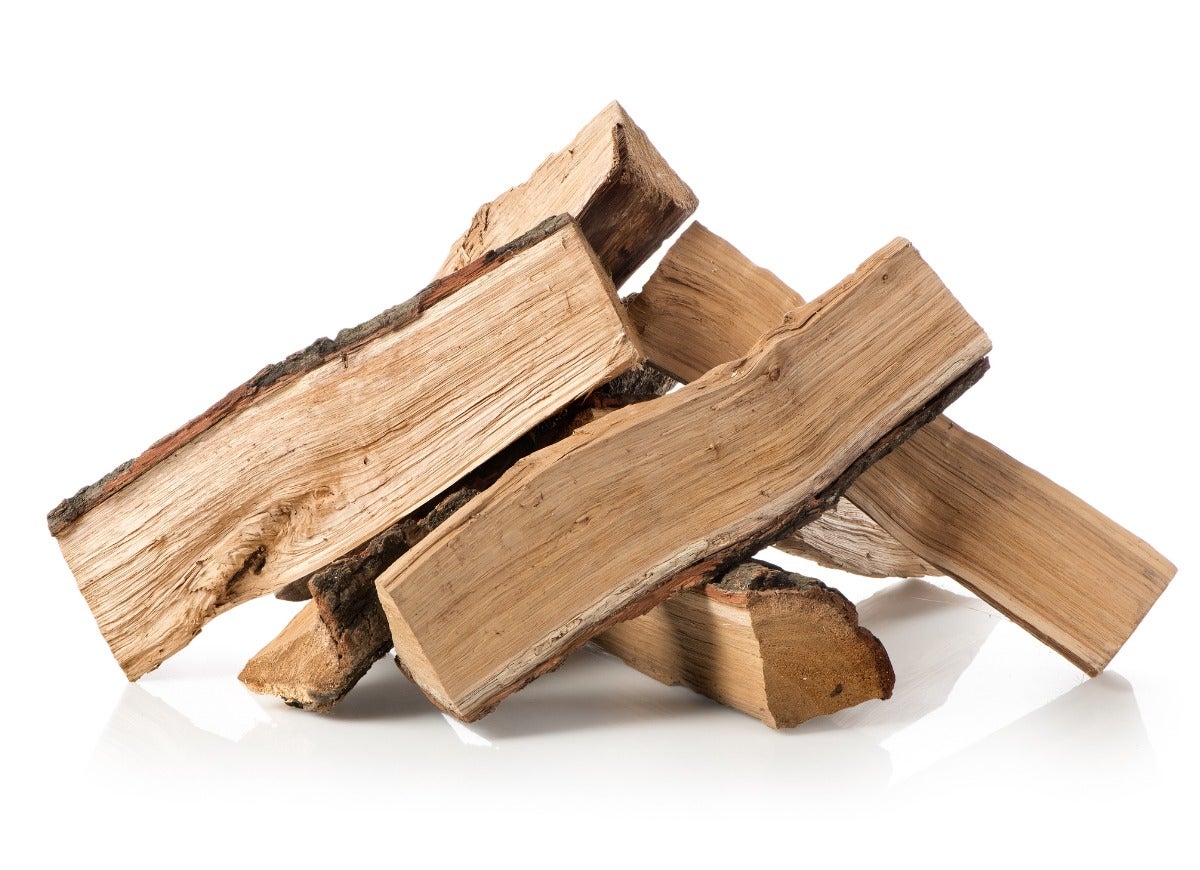
If you happen to have a fire pit in your backyard, consider creating a simple wood-fired pool heater. Purchase some copper pipe and a small pump. Run the copper pipe through the fire pit, then attach either end of the pipe to a garden hose. Run one garden hose to a pump in the pool or the pool’s filter pump, and drop the other into the pool. Build a large fire, then start the pump. The fire pit heats the water as it passes through the copper pipe, recirculating warm water back into the pool.
Pour Liquid Solar Cover
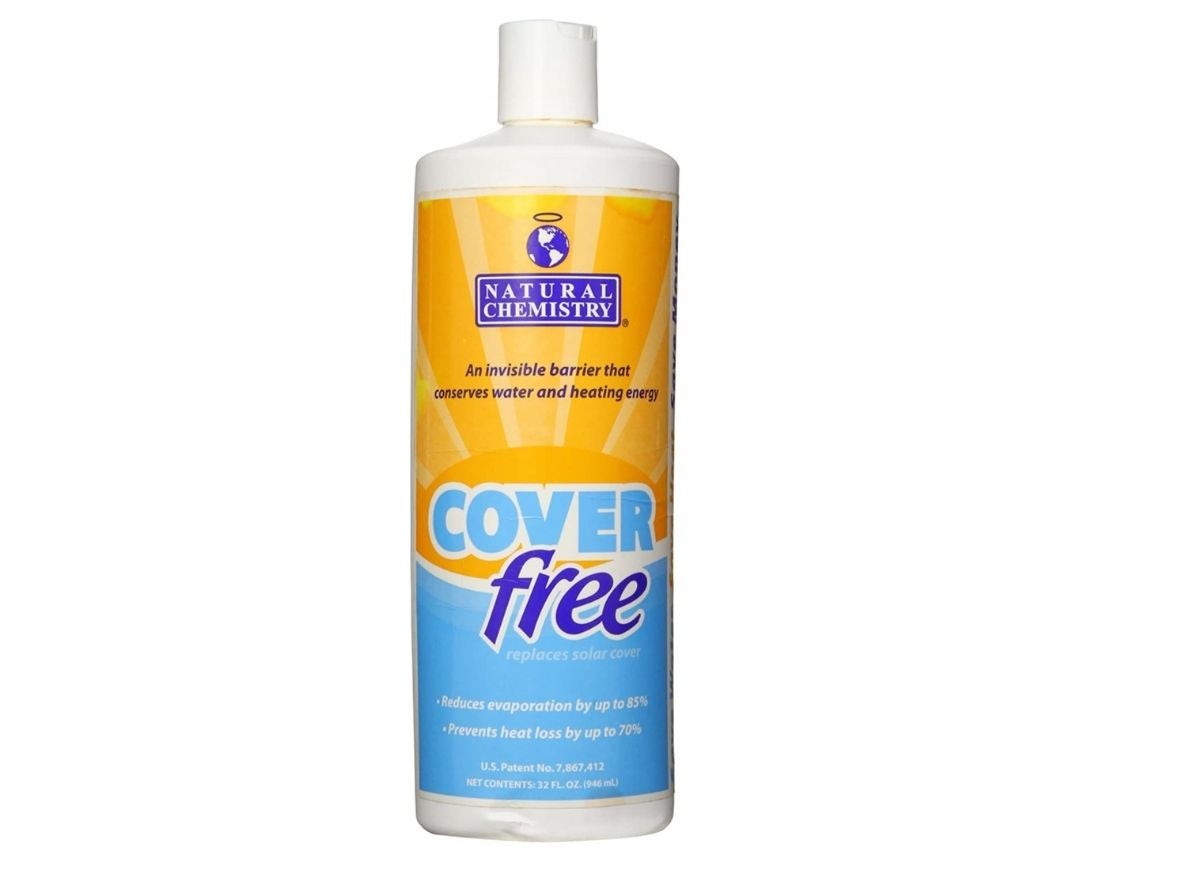
Like a standard solar cover, a liquid solar cover, such as this product from Natural Chemistry (available on Amazon), stops heat loss. But instead of relying on material, the barrier is formed by a thin layer of alcohol. Alcohol is less dense than water, so it creates a film on the pool’s surface that prevents the water from evaporating. Although not as effective as a solid cover, a liquid solar cover can reduce the evaporation of heated water from a pool by as much as 85 percent.
Build or Buy a Windscreen
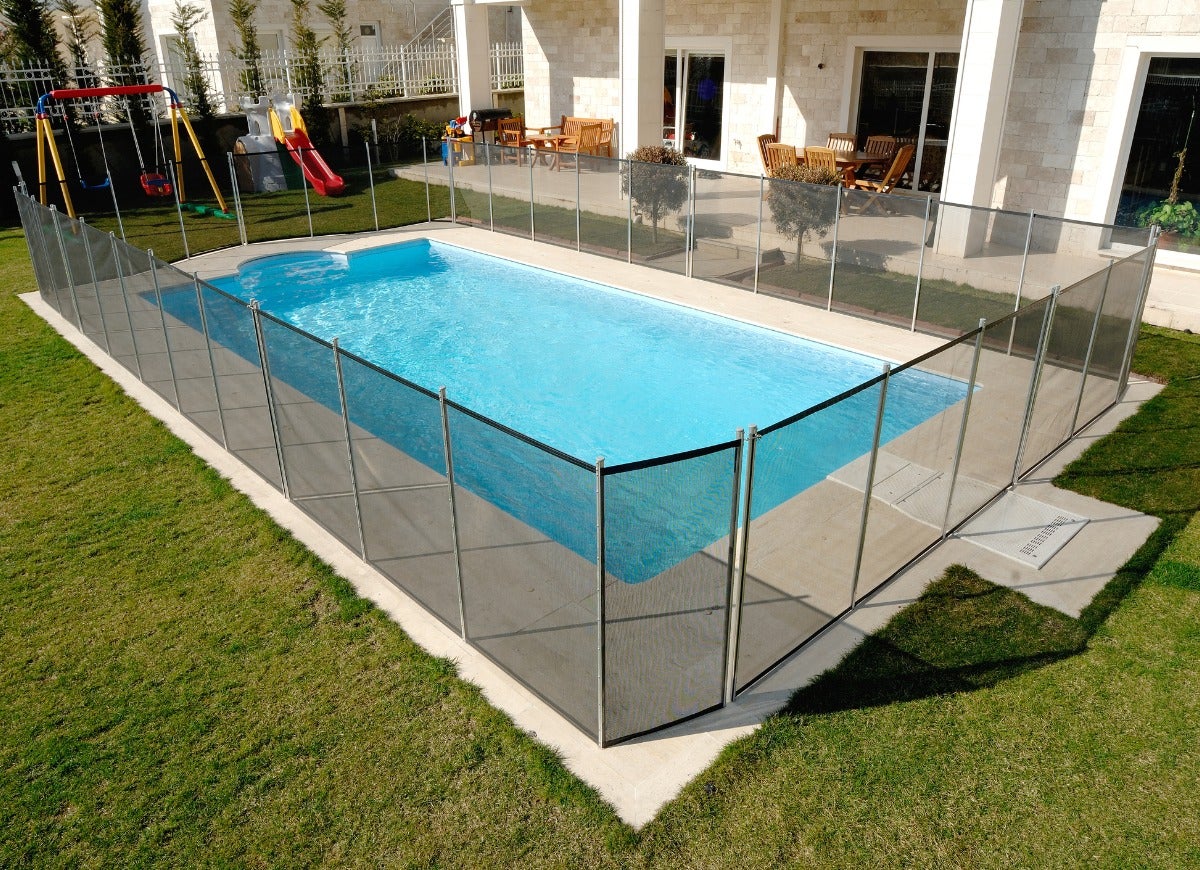
Wind blowing across the surface of a pool can accelerate the evaporation process, causing the pool water to lose heat more quickly. If you live in a windy area, consider building or purchasing a windscreen to protect your pool from wind, allowing it to better retain heat. Blocking the wind will also make pool occupants feel warmer.
Invest in a Solar Pool Heater
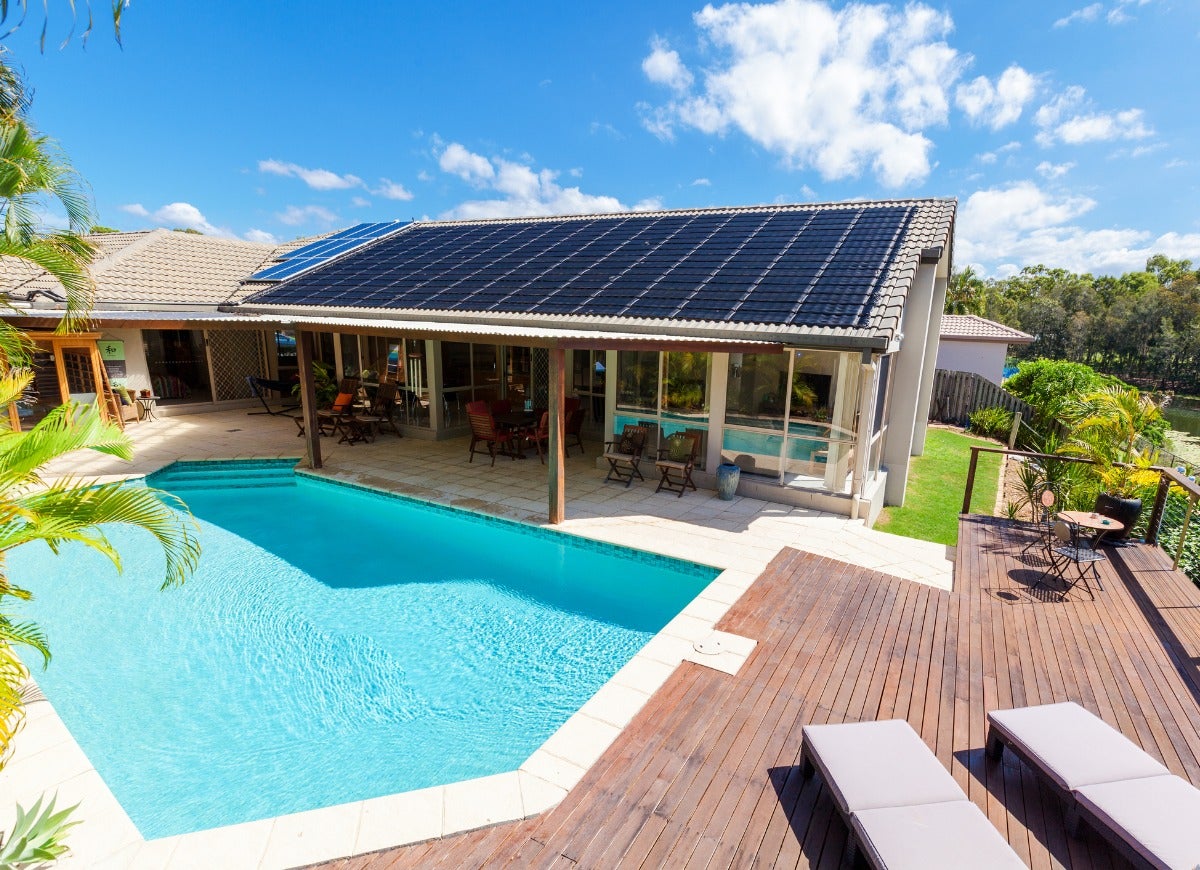
In a solar pool heating system, water is pumped from the pool to solar cells mounted on the roof of the home. The cells then warm the water before it flows back to the pool. According to Energy.gov, a solar pool heater costs $3,000 to $4,000 to purchase and install, but unlike conventional gas and electric pool heaters, it costs nothing to operate. For best results, use solar cells in tandem with a solar cover.

Start benefiting from solar.
Bob Vila has partnered with EnergySage to help you compare multiple quotes for rooftop solar panels from vetted installers in your area.Get Free Quotes

The Homeowner Survival Kit
This year’s Bob Vila Approved is a hand-picked curation of tested, vetted, must-have essentials for surviving homeownership today.